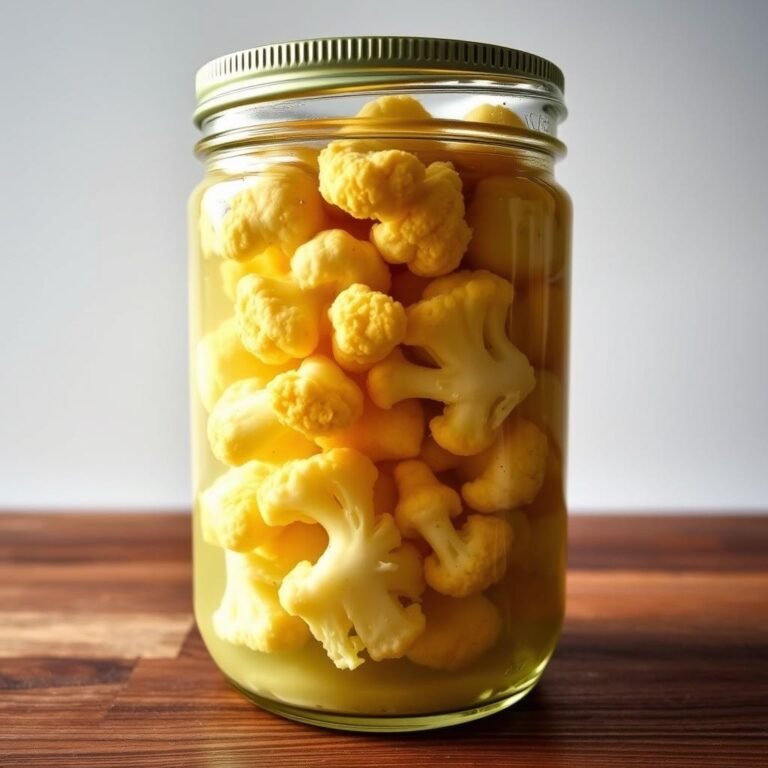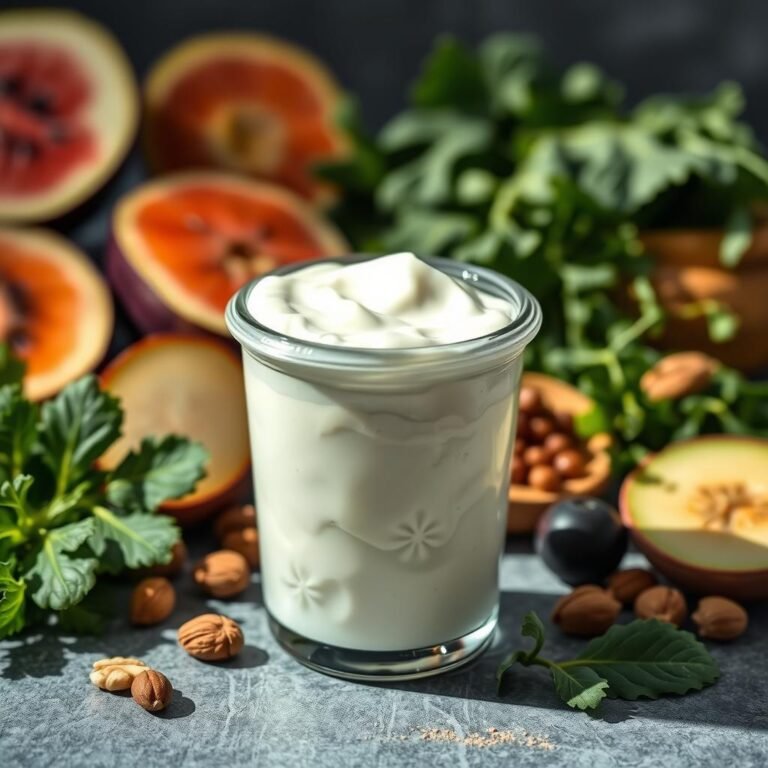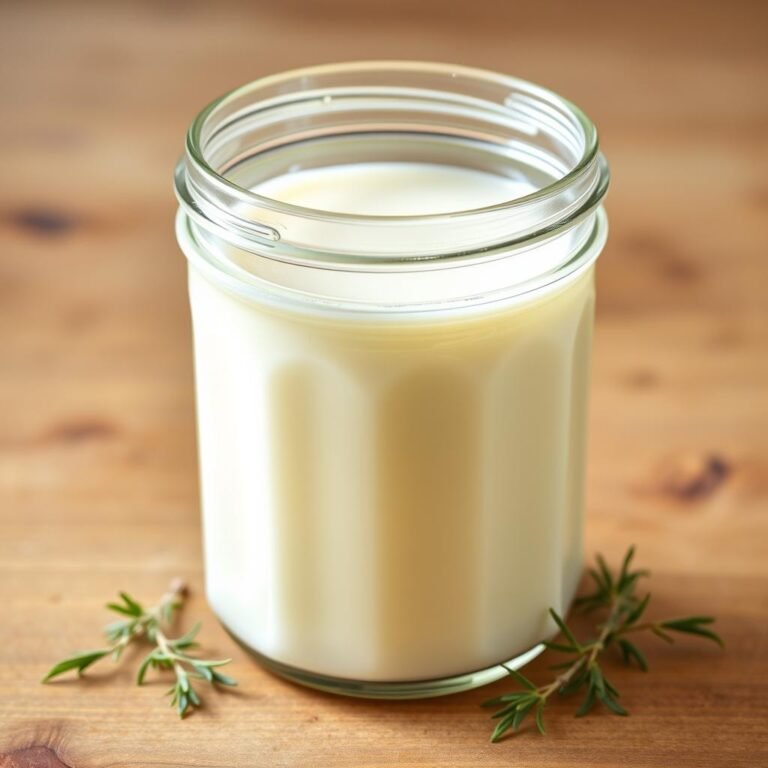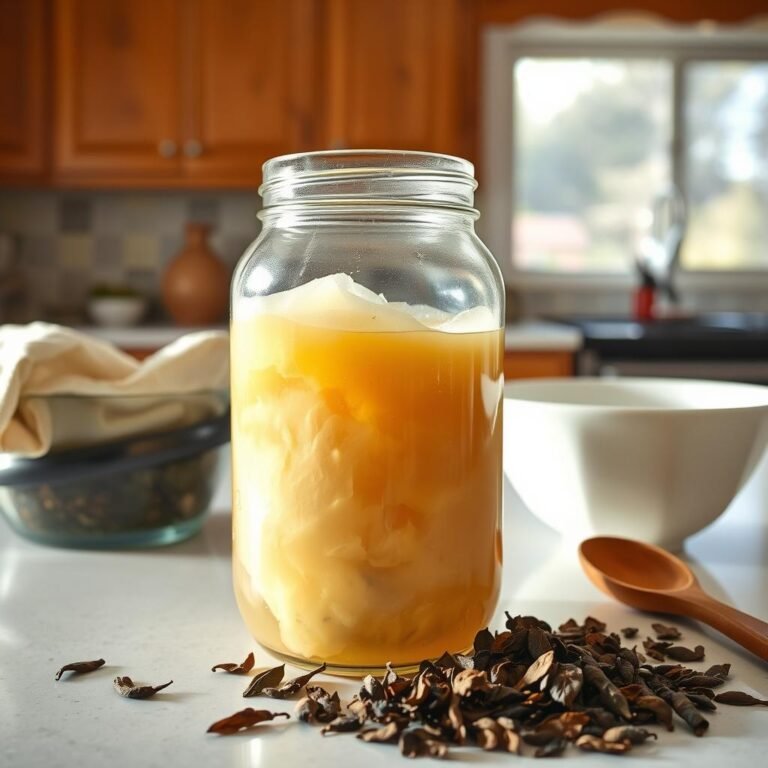Does Philadelphia Cream Cheese Have Probiotics? The Truth
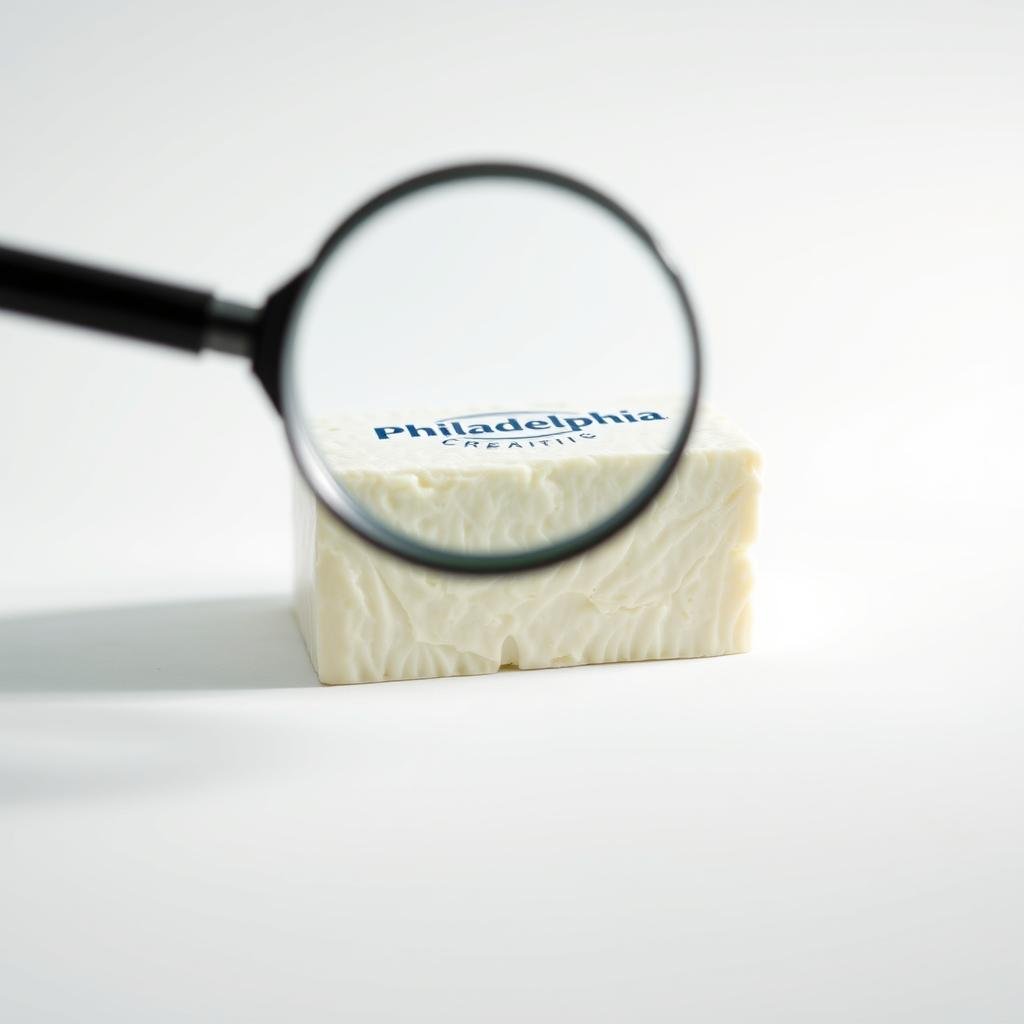
Are you wondering if your favorite cream cheese has probiotics? This is a big question for many. More people want to know about the health perks of probiotics. Philadelphia Cream Cheese is a favorite in many homes for its creamy taste and rich flavor.
But does it have probiotics? We’ll look into the ingredients and how it’s made. This will help us figure out if it has probiotics.
Let’s dive into the world of probiotics and their benefits. We’ll see how Philadelphia Cream Cheese stacks up against other dairy products. Whether you’re a fan or new to the brand, this guide has all you need to know about Philadelphia Cream Cheese and probiotics.
Introduction to Philadelphia Cream Cheese
Philadelphia Cream Cheese has been loved in American homes for years. It’s known for its creamy texture and rich taste. You can find it in bagels and cheesecakes.
This cheese is a must-have in kitchens. It’s great on toast for breakfast or in fancy recipes. Its smoothness and taste make it a favorite.
Knowing the nutritional info of Philadelphia Cream Cheese is key for those watching their diet. It’s a good source of calcium and protein. These are important for strong bones and muscles.
More people want to know if dairy products like this cheese have probiotics. Probiotics are good for the gut. There’s growing interest in whether Philadelphia Cream Cheese has them.
What Are Probiotics?
Probiotics are live microorganisms that help us stay healthy. They live in our gut and are key to our well-being. They support our immune system and help us digest food better.
Definition and Benefits
Probiotics are called “good bacteria” because they keep our gut healthy. They boost our immune system and help with digestion. They also make vitamins and help us absorb minerals.
They reduce inflammation and protect us from diseases. Eating foods with probiotics can help after we take antibiotics. This is because antibiotics kill good bacteria too.
Types of Probiotics
The two main types of probiotics are Lactobacillus and Bifidobacterium. They are found in foods like yogurt and cheese. Lactobacillus is in yogurt, and Bifidobacterium is in some cheeses.
There are many probiotic cheeses out there. Each has its own benefits. Trying different cheeses can improve your gut health and overall health.
Probiotic Strains and Their Benefits:
- Lactobacillus:
- Promotes gut health
- Enhances immune response
- Found in yogurt and fermented products
- Bifidobacterium:
- Aids in digestion
- Reduces inflammation
- Common in dairy products
How Philadelphia Cream Cheese is Made
Learning how Philadelphia Cream Cheese is made helps us understand its special taste and texture. This part talks about the ingredients and how it’s made. It shows how these steps make the cheese unique and healthy.
Ingredients
The main ingredients of Philadelphia Cream Cheese are simple but important. They include:
- Fresh milk
- Cream
- Lactic acid bacteria
- Salt
- Stabilizers such as carob bean gum and xanthan gum
These ingredients make the cheese creamy and healthy.
Production Process
The first step is pasteurization. Milk and cream are heated to kill bad bacteria. This keeps the good bacteria and makes the cheese safe and last longer.
Then, lactic acid bacteria are added. They turn lactose into lactic acid. This makes the cheese smooth and tangy.
The mixture is blended well, with stabilizers added to keep it smooth. After that, the cream cheese is packed carefully. This makes sure every tub tastes great and is healthy.
Nutritional Content of Philadelphia Cream Cheese
Knowing the philadelphia cream cheese nutritional information is key for those adding it to their diet. It has many nutrients that make it special.
Calories and Macronutrients
A single ounce (28 grams) of regular Philadelphia Cream Cheese has about 99 calories. It’s a rich source of energy. This amount has 10 grams of fat, 2 grams of protein, and 2 grams of carbs.
The fat in it is mostly saturated. Eating it in small amounts is best for health.
Vitamins and Minerals
The philadelphia cream cheese nutritional information shows it’s full of vitamins and minerals. For example, one ounce has about 10% of the Daily Value (DV) for Vitamin A. Vitamin A is good for your eyes and immune system.
It also has 5% of the DV for Riboflavin (Vitamin B2). Vitamin B2 helps with metabolism.
Philadelphia Cream Cheese uses a starter culture of lactic acid bacteria. Some of these are probiotics, which are good for health. If you want probiotics, look for “live and active cultures” on the label.
Does Philadelphia Cream Cheese Have Probiotics?
Philadelphia Cream Cheese is loved for its smooth texture and rich flavor. But does it have probiotics? We need to look at how it’s made and the cultures used.
Starter cultures, like lactic acid bacteria, are key in making cream cheese. These cultures start with live bacteria. But, do probiotics make it through the making process? Heat and pasteurization often kill off good bacteria, which might remove any probiotic benefits.
So, does Philadelphia cream cheese have probiotics? It depends on if the cultures stay alive until the end. Traditional cream cheese might not have much probiotics because of the making process. But, some brands add live cultures after pasteurization to boost probiotics. This way, they give health benefits to the consumer.
The Role of Lactic Acid Bacteria in Cream Cheese
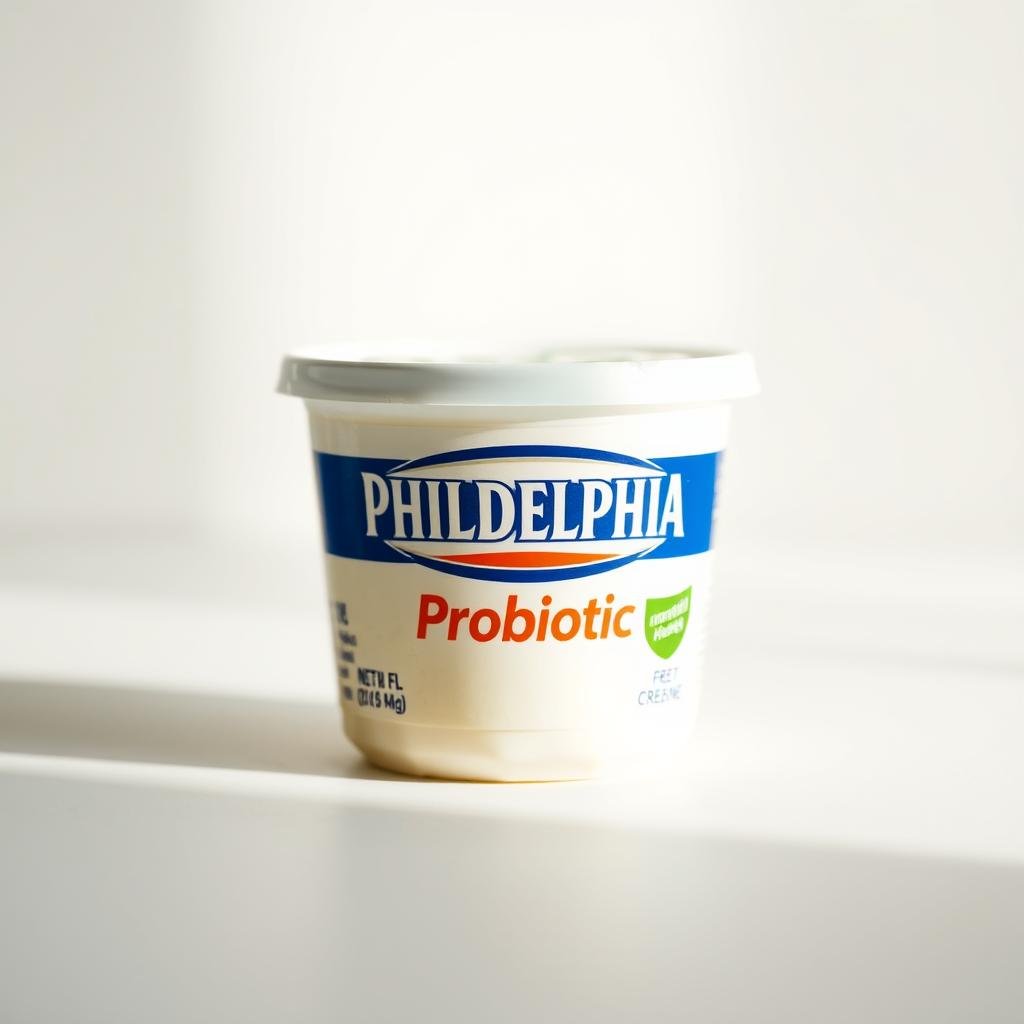
Lactic acid bacteria are key in making cream cheese. They change milk into cream cheese. This process adds texture, flavor, and health benefits, like probiotics in Philadelphia Cream Cheese.
What is Lactic Acid Bacteria?
Lactic acid bacteria (LAB) are good microbes. They turn lactose into lactic acid. This makes dairy products like cream cheese tangy and creamy.
LAB includes Lactococcus and Lactobacillus. These are important in dairy fermentation.
Impact on Probiotic Content
Not all LAB in cream cheese can help our health. But, some strains do. Philadelphia Cream Cheese’s probiotics depend on the used strains and how it’s made.
By using strong probiotic LAB, cream cheese can help our gut and immune system.
Knowing about lactic acid bacteria shows their role in Philadelphia Cream Cheese. It also points out their role in adding probiotics to this dairy product.
Probiotics in Dairy Products
Dairy products are known for their health benefits. They are a common source of probiotics. This makes them great for improving gut health.
Common Dairy Sources of Probiotics
Yogurt is famous for its probiotics. Brands like Chobani and Fage have live cultures. These cultures help keep your digestive system healthy.
Kefir, a fermented milk drink, is also packed with probiotics. It has many different bacteria. Buttermilk and some cheeses, like Gouda and mozzarella, also have probiotics.
Philadelphia Cream Cheese Compared
Philadelphia Cream Cheese doesn’t have probiotics. It doesn’t have live cultures on its label. But, it’s loved for its creamy texture and taste.
| Dairy Product | Probiotics | Examples |
|---|---|---|
| Yogurt | High | Chobani, Fage |
| Kefir | High | Commercial and homemade varieties |
| Buttermilk | Moderate | Cultural Creamery, Organic Valley |
| Cheese | Varies by type | Gouda, mozzarella, cheddar |
| Philadelphia Cream Cheese | Low | Philadelphia Brand |
Philadelphia Cream Cheese may not have as many probiotics. But, it’s a favorite for its taste and use in recipes. If you want more probiotics, try yogurt, kefir, or some cheeses.
Potential Health Benefits of Philadelphia Cream Cheese
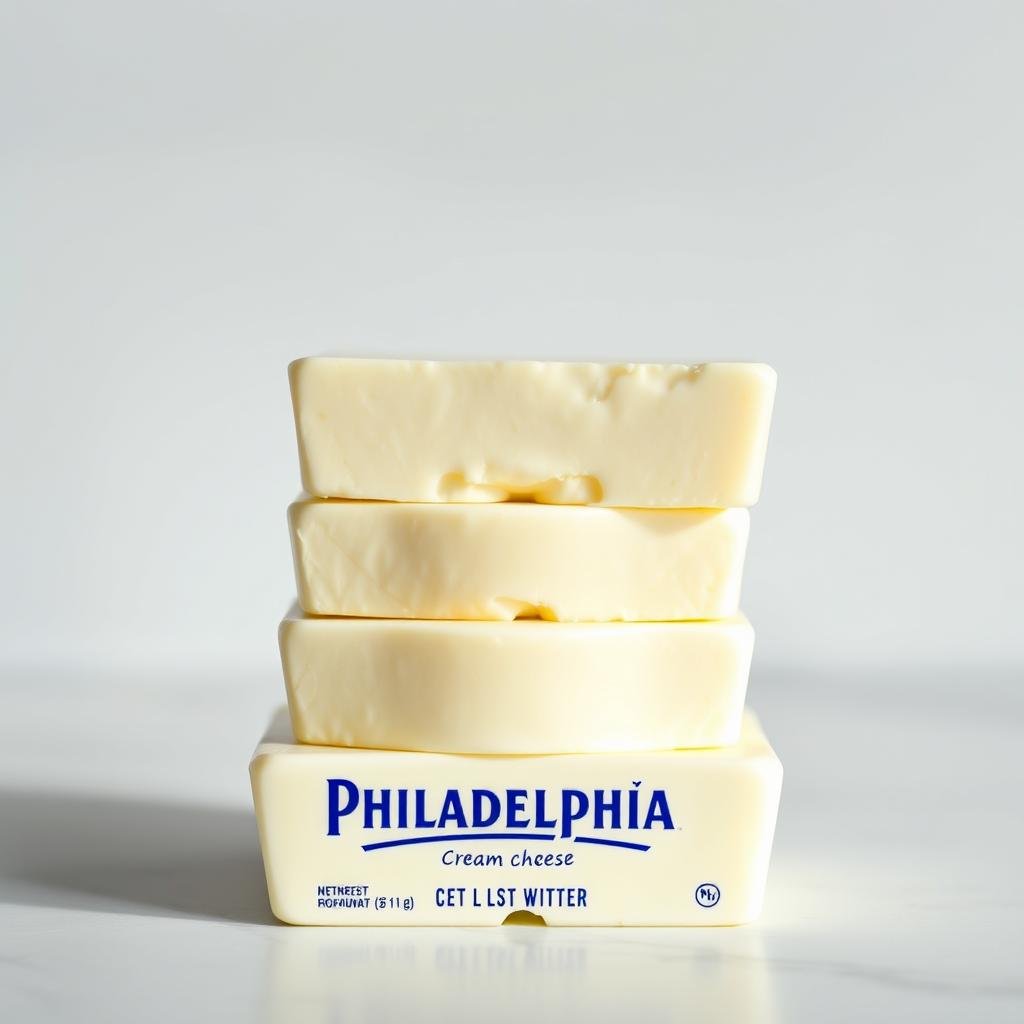
Philadelphia cream cheese is good for you. It has vitamins and nutrients that help your health. Let’s look at some key benefits.
Vitamin A
Philadelphia cream cheese is rich in Vitamin A. Vitamin A helps your eyes, immune system, and organs work right. Eating it regularly boosts your Vitamin A levels.
Antioxidants
It also has antioxidants. Antioxidants fight off harmful free radicals. Free radicals can lead to diseases. Eating Philadelphia cream cheese can help prevent these problems.
Low in Lactose
It’s also good for those with lactose intolerance. It has less lactose than other dairy products. So, you can enjoy its taste without digestive issues.
In short, Philadelphia cream cheese is full of Vitamin A, antioxidants, and has low lactose. It’s a healthy choice for many people.
Choosing Cream Cheeses with Live and Active Cultures
When picking cream cheeses, it’s key to know how to find the real ones. Cream cheeses with probiotics are good for you because they have helpful bacteria.
What to Look For
Look for “live and active cultures” or specific probiotic strains in the ingredients. Nancy’s Organic Cultured Cream Cheese has four live probiotic cultures. This is important for those wanting probiotic benefits.
Labeling Information
Good labeling is important when choosing probiotic cheese. The packaging should say “live and active cultures.” For example, Green Valley Organic Lactose-Free Cream Cheese and Organic Valley Cream Cheese both have live cultures.
Comparing brands can help you make a better choice. For more details, check out this comprehensive guide.
| Brand | Calories | Fat (g) | Saturated Fat (g) | Sodium (mg) | Carbohydrates (g) | Sugar (g) | Protein (g) | Probiotics |
|---|---|---|---|---|---|---|---|---|
| Nancy’s Organic Cultured Cream Cheese | 110 | 10 | 6 | 40 | 2 | 1 | 1 | Yes |
| Green Valley Organic Lactose-Free Cream Cheese | 90 | 10 | 6 | 75 | 1 | 1 | 1 | Yes |
| Organic Valley Cream Cheese | 110 | 10 | 6 | 100 | 2 | 2 | No | |
| Miyoko’s Creamery Plant Milk Cream Cheese | 90 | 8 | 2.5 | 115 | 4 | 1 | 3 | Contains Cultures |
| Philadelphia Whipped Cream Cheese Spread | 50 | 4.5 | 2.5 | 95 | 2 | 1 | 1 | No |
Downsides of Philadelphia Cream Cheese
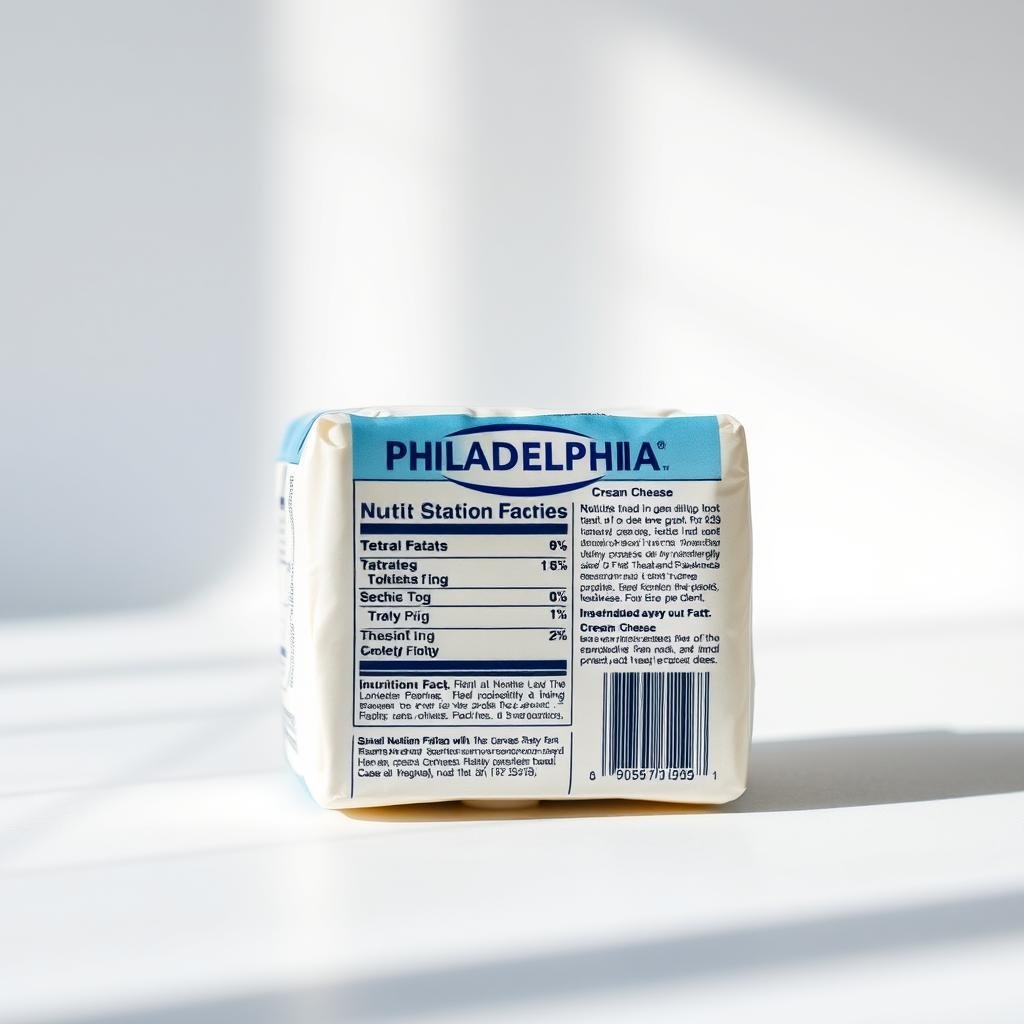
Philadelphia Cream Cheese is a favorite in many homes. But, it’s good to know its downsides. This knowledge helps you decide if it fits in your diet. We’ll look at two main concerns: its high saturated fat and short shelf-life.
High Saturated Fat Content
Philadelphia Cream Cheese has a lot of saturated fat. A serving size has a lot of this fat. Too much can harm your heart.
Saturated fats can make LDL cholesterol go up. This increases heart disease risk. So, it’s important to eat it in small amounts.
Short Shelf-Life
Philadelphia Cream Cheese doesn’t last long. It must be kept cold and used within weeks. This can cause waste if not eaten fast.
People often throw away expired cream cheese. This is expensive and a hassle.
The table below shows the nutritional facts of Philadelphia Cream Cheese. It highlights its saturated fat:
| Nutrient | Amount per Serving |
|---|---|
| Calories | 100 |
| Total Fat | 9g |
| Saturated Fat | 6g |
| Cholesterol | 30mg |
| Sodium | 110mg |
| Total Carbohydrates | 1g |
| Protein | 2g |
Is Philadelphia Cream Cheese a Good Source of Probiotics?
Looking into Philadelphia Cream Cheese for probiotics, we need to check its ingredients and how it’s made. It mainly has pasteurized milk and cream, salt, carob bean gum, and cheese culture. Cheese culture uses lactic acid bacteria, which can be good for us. But, the pasteurization process can kill these beneficial bacteria.
Pasteurization uses high heat to kill bad bacteria. This also kills some good bacteria. So, to answer if Philadelphia Cream Cheese has probiotics, we must consider this step. If you want probiotics, look for “live and active cultures” on labels or choose other dairy products known for probiotics.
| Cream Cheese | Probiotic Content |
|---|---|
| Philadelphia Cream Cheese | Low, due to pasteurization |
| Greek Yogurt | High, rich in live cultures |
| Kefir | Very High, diverse bacteria strains |
| Probiotic Cottage Cheese | Moderate to High, contains live cultures |
In conclusion, Philadelphia Cream Cheese does have some lactic acid bacteria. But, its pasteurization process greatly reduces its probiotic content. So, it’s not the best choice compared to other fermented dairy products.
Probiotic Cheese Options to Consider
More people are looking for probiotic cheese as gut health awareness grows. These cheeses have good bacteria that help with digestion and health. It’s important to find different probiotic cheeses to add variety to your diet.
Alternative Probiotic-Rich Cheeses
Many cheeses are packed with probiotics. Here are some favorites:
- Kefir Cheese: Made from kefir grains, it’s full of probiotics and tastes tangy.
- Gouda: This cheese has good bacteria that stay active as it ages.
- Cheddar: Aged Cheddar, aged over 12 months, has lots of probiotics.
- Swiss Cheese: Its holes are from bacteria that stay alive until you eat it.
- Cottage Cheese: If it says “live and active cultures,” it’s creamy and full of probiotics.
Comparison to Philadelphia Cream Cheese
Philadelphia Cream Cheese is creamy and versatile. But, it doesn’t have as many probiotics as other cheeses. Here’s how they compare:
| Cheese Type | Probiotic Content | Texture | Flavor |
|---|---|---|---|
| Philadelphia Cream Cheese | Low | Creamy | Mild |
| Kefir Cheese | High | Smooth | Tangy |
| Gouda | Moderate | Semi-Hard | Nutty |
| Cheddar | Moderate-High | Firm | Sharp/Extra Sharp |
| Swiss Cheese | Moderate | Semi-Hard | Mild, Nutty |
| Cottage Cheese | Moderate (if labeled) | Soft | Mild |
Adding different probiotic cheeses to your diet can boost your health. While Philadelphia Cream Cheese is easy to use and mild, trying other cheeses can add more health benefits and flavors.
Conclusion
In this review, we looked at Philadelphia Cream Cheese’s nutritional value and how it’s made. We also checked if it has probiotics. Philadelphia Cream Cheese is loved for its creamy texture and taste. But, it’s not a big source of probiotics.
The way it’s made, through pasteurization, kills most good bacteria. This includes probiotics. It does have some health benefits like being low in lactose and rich in Vitamin A. But, it also has a lot of saturated fats.
This means it’s best to eat it in small amounts. If you want probiotics, try other cheeses with live cultures. These can help your gut health and overall health.
To sum up, Philadelphia Cream Cheese may not have many probiotics. But, it’s a favorite in many homes. Mixing it with other dairy products with live cultures can help you get more probiotics. This way, you can enjoy good taste and nutrition.

